A photovoltaic, or PV, inverter converts the dc output of a solar cell or array into ac that can feed directly into the electrical grid (Grid Tie) or be used by a local electrical grid (Off-Grid). Solar PV inverters have special functions adapted for use with photovoltaic arrays, including maximum power point tracking (MPPT) and anti-islanding protection.
 As PV systems proliferate, it becomes increasingly important that their features don’t cause difficulties in the grids to which they connect. So the testing of PV inverters has gone mainstream. Test setups specifically aimed at exercising PV inverters now allow performance testing of inverter behavior during voltage and frequency fluctuations found on the grid, either via standalone instrumentation or with an automated test system.
As PV systems proliferate, it becomes increasingly important that their features don’t cause difficulties in the grids to which they connect. So the testing of PV inverters has gone mainstream. Test setups specifically aimed at exercising PV inverters now allow performance testing of inverter behavior during voltage and frequency fluctuations found on the grid, either via standalone instrumentation or with an automated test system.
First a few basics. A solar inverter basically takes dc from the solar array and converts it to ac via a pair of power transistors. Residential PV inverters have one set of transistors for generating single-phase ac, utility grade inverters have three sets for generating three-phase ac. To prevent power from the grid (or from batteries in the case of off-grid systems) from feeding back to the PV array, the inverter may incorporate a blocking diode in one of the conductors in a single-phase system. The flaw is that the diode forward-bias resistance causes a loss of efficiency. A small blocking diode, depending in part upon the current rating of the system, discards a significant amount of power, so that a large finned heatsink appears warm to the touch.
 An early strategy for countering power loss in conventional blocking diodes was to substitute Schottky diodes. With forward bias voltage drop as low as 0.3 V, this was a partial solution. But in the power marketplace where one cent per kilowatt hour can make or break price parity, better techniques have emerged employing active semiconductors.
An early strategy for countering power loss in conventional blocking diodes was to substitute Schottky diodes. With forward bias voltage drop as low as 0.3 V, this was a partial solution. But in the power marketplace where one cent per kilowatt hour can make or break price parity, better techniques have emerged employing active semiconductors.
Inverter test setups gauge such measures as well as other inverter parameters. Real solar arrays can be large and influenced by various weather conditions like irradiation, temperature, rain, dirt, and shade which affect the I-V curve output. To duplicate these effects, labs typically use a solar array simulator which can provide steady, repetitive control conditions.
PV inverters that tie into the grid now must meet rigorous standards such as IEEE 1547/IEC 61000-3-15/IEC 62116 that ensure on-grid products won’t cause problems or safety issues. The usual approach in testing is to tie the PV inverter to a regenerative grid simulator that provides a four-quadrant, regenerative, grid simulation with advanced features for compliance, safety and product verification testing.
For gauging the behavior of the PV inverter itself, dedicated inverter testers have become available that incorporate features that, for example, allow performance testing of inverter behavior during voltage and frequency fluctuations found on the grid.
A review of test procedures developed by utilities illustrates how PV inverter performance must be characterized. One document prepared by Southern Calif. Edison for the Lawrence Berkeley National Lab serves as a good example.
SCE delineates solar inverter tests that include dc performance tests to assess the inverter performance during voltage and power changes in the dc source, determine the inverter delay time to shut down the power conversion upon disconnection, and gauge the transients and the overall inverter response generated when the inverter input from the PV simulator changes drastically due to a rapid shading of the solar generation site.
Other SCE tests are designed to assess the inverter grid-side connections. For example, there are tests to find the delay time when the inverter is suddenly connected or reconnected to the grid, the inverter transient over-voltages generated during grid disconnection, inverter performance during under-voltage transients and/or sags, as well as over-voltage transients and/or swells, typical in the electric grid and/or IEEE standard protection requirements.
Other grid-side tests include those aimed at assessing the inverter performance during under-frequency and over-frequency fluctuations typically observed in the electric grid and/or IEEE standard protection requirements. They also assess the inverter behavior during conservation voltage reduction (CVR), used by some utilities to reduce the power consumed by customer loads.
It is clear from the SCE tests that utilities are concerned about short-term conditions that might cause PV inverters to rapidly engage and disengage with their grid connections, causing instabilities. For example, some of the SCE tests try to assess inverter dynamic behavior and short-circuit current contribution during system faults. Some also aim at characterizing inverter performance during unbalanced under-voltage and over-voltage transients and/or sags and swells that are typical in the electric grid. They also assess the inverter’s ability to ride through high and low voltage conditions that would normally trigger the inverter protection to shut down. This feature avoids unnecessary disconnection of inverters from the grid that could worsen system events. Ditto for the inverter’s ability to curtail power during over-frequency and under-frequency events that would normally trigger inverter shut down.
This sort of in-depth testing illustrates the need for specialized setups optimized specifically to handle numerous conditions that can arise on the PV inverter input and output.


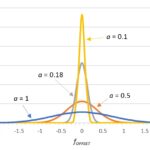
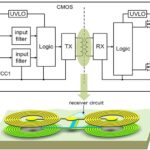
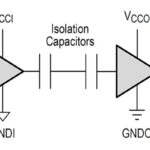
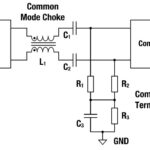
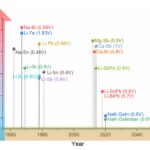

Leave a Reply
You must be logged in to post a comment.